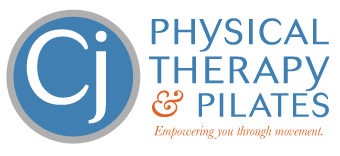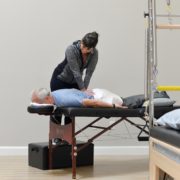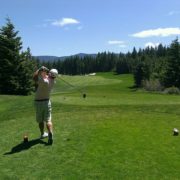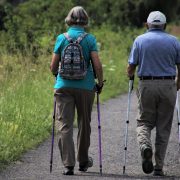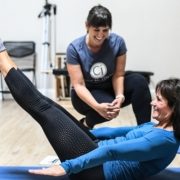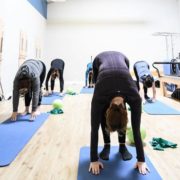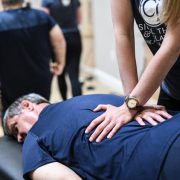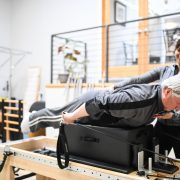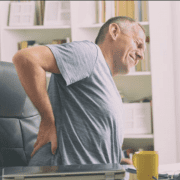Piriformis syndrome and Sciatica – PT not working?
I recently polled my readers regarding their most important concerns when it comes to their musculoskeletal health. In other words, what questions were they desperately seeking answers for related to back, neck, knee, hip, shoulder, or ankle pain?
Here is a great question I received from John:
“I’m getting Physical Therapy for lower back pain and sciatica that is said to be from my piriformis. My PT treatment has consisted of various exercises and some massage. Eight sessions in and no change at all. I’m still having pain when sitting or walking a distance. What now? Do I need an Ultrasound or MRI to see if there is any damage or tear to my piriformis?”
First, John, I’m so sorry to hear you’re still having pain and not seeing any change after a good amount of physical therapy. When it comes to back pain and sciatica, it’s critical that you receive a thorough mechanical and movement examination by your PT before any treatment begins. This should involve repeated testing and retesting of movement and range of motion to determine:
1) where your pain is coming from and
2) what movement patterns trigger and relieve your symptoms
Without this first critical step, you risk missing the root cause of your pain and treating just symptoms. This type of testing is also essential to determine if physical therapy can even resolve your problem. If your physical therapist simply read the prescription from your doctor and dove into generalized treatment protocols – there’s your first problem right there – and it could explain why after 8 sessions you’re seeing no change in your condition.
In your case, it sounds like the massage is intended to treat your symptoms – perhaps your tight, tender piriformis that is believed to be causing your back pain and sciatica. This is perfectly appropriate, however, it’s important to incorporate targeted, therapeutic movement to make the most of what your manual therapy (massage) just did.
In other words, movement is the real “medicine”. Manual therapy is designed to enhance blood flow to and prepare your soft tissue (muscles and ligaments) to be better equipped to tolerate and perform the movement/exercise that is going to have a long-lasting effect.
If the massage and exercise are not done in a specific and targeted way – they aren’t going to have their intended effect. It’s possible this could be happening to you. If you’re not totally clear on what your exercise is for and what the intended effect is – chances are high your exercises haven’t been prescribed to you properly. If you suspect this to be the case, it’s worth your while to try for a different, perhaps more specialized physical therapist before you go jumping into diagnostic tests that could lead you down a rabbit hole of unnecessary procedures or surgery.
Now, let’s assume for a moment that you did receive targeted and high-quality physical therapy treatment and it’s simply not working. This does happen from time to time – but it should only be approximately 20% of the time for the majority of musculoskeletal problems such as back pain and sciatica. And in my opinion, it should be caught well before 8 sessions. In my experience, it takes about 5-6 (quality) PT sessions to figure out if a problem can be resolved with movement and natural means. If not, then a referral to another specialty is necessary.
Are you there yet? I can’t be certain.
But to answer your question about whether or not you need an MRI or Ultrasound…
If quality, targeted physical therapy has been truly exhausted then yes – either of these diagnostic tests would be the next step in providing valuable information as to what more might be going on.
Ultrasound is a non-invasive diagnostic tool designed to visualize both organs and soft tissue. It could be a good option for examining your piriformis if you are certain that is where your problem is coming from. But piriformis syndrome only accounts for about 30% of all sciatica cases. And typically a tear in your piriformis will not cause pain to radiate down your leg. Most of the time, sciatica is caused by nerve impingement occuring in your lumbar spine (low back). If conservative treatment, like physical therapy, has been fully explored – an MRI could be helpful to see how badly a nerve is being pinched or irritated and whether or not a procedure or surgery is warranted. But in general, the research has shown time and time again that spine surgery is really only successful when you’ve got serious and progressive neurological deficits and symptoms.
In other words, you might have symptoms like foot drop, and your leg is getting weaker and numb by the minute. Otherwise, physical therapy – although it may be slower to work – has equal if not better results compared to surgery and it’s a lot safer.
The caveat, however, is you need to find a good physical therapist.
I hope this helps answer your question. Most importantly – don’t give up hope!
For the next few months I’ll be answering questions like these each week in my articles. If you’ve got your own questions regarding musculoskeletal aches or pains that you want answers for, reach out via the information below.
Local to Portsmouth and feeling frustrated with your current physical therapy treatment just like John?
Reach out – we’d be happy to provide a second opinion. CLICK HERE to request a Free Discovery call with one of my specialists.
Dr. Carrie Jose, Physical Therapist and Pilates expert, owns CJ Physical Therapy & Pilates in Portsmouth and writes for Seacoast Media Group. To request a free copy of her guide to back pain CLICK HERE or to get in touch, email her at [email protected].
